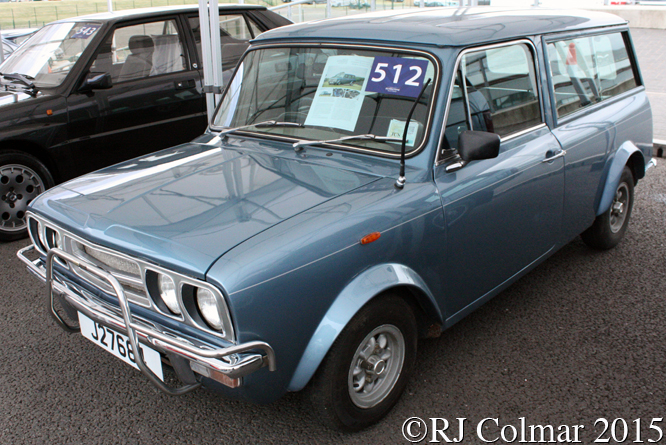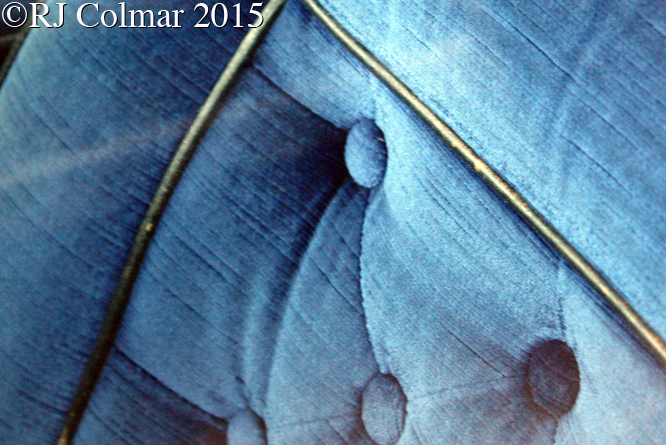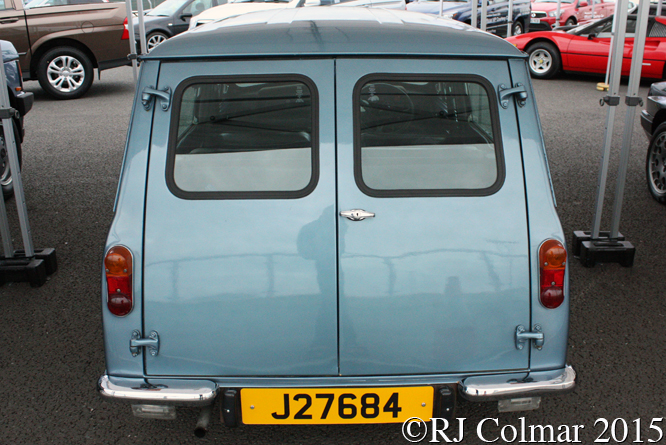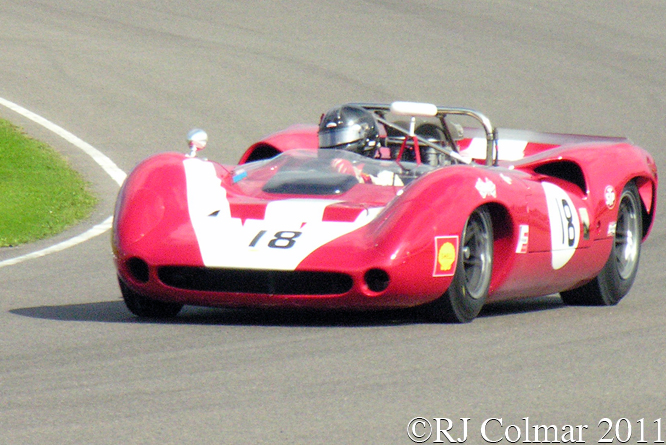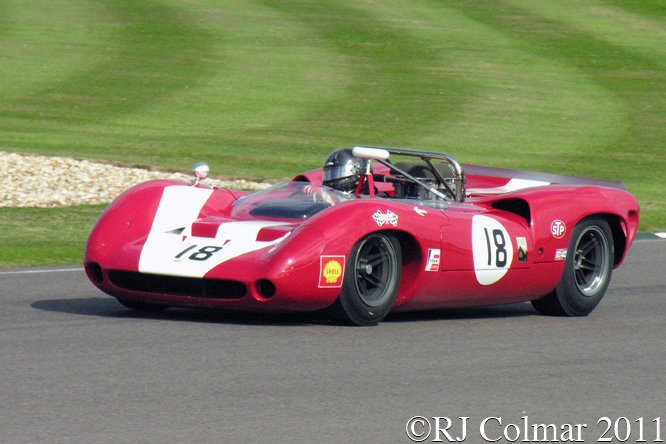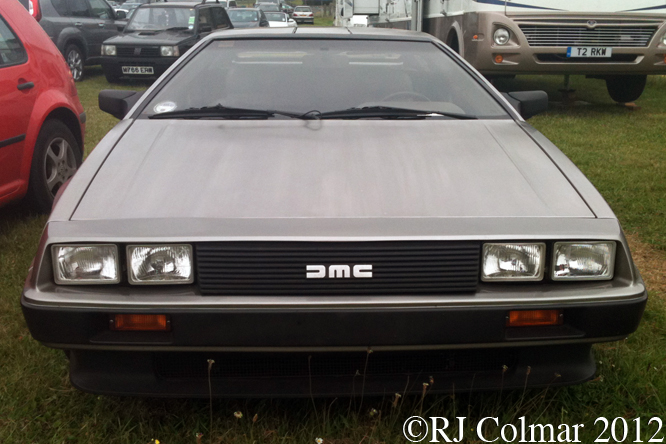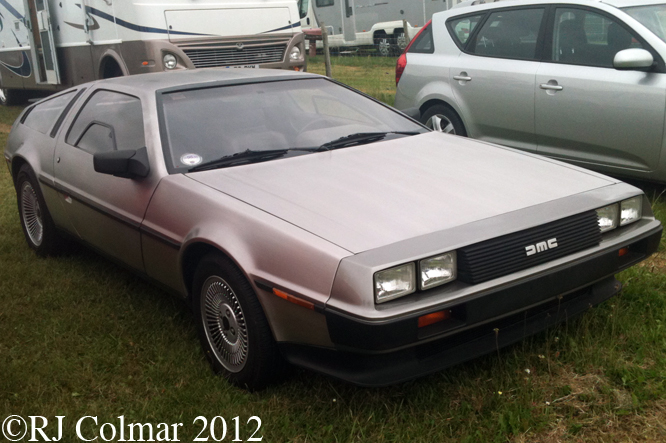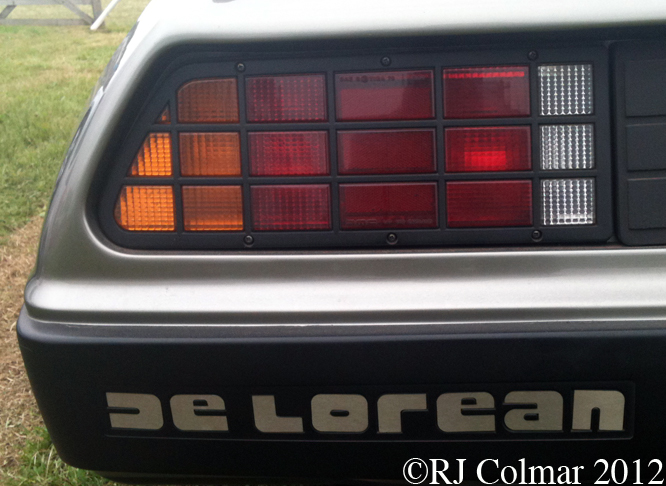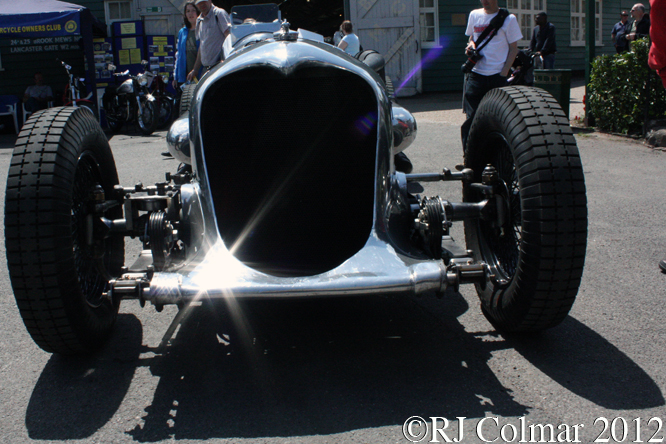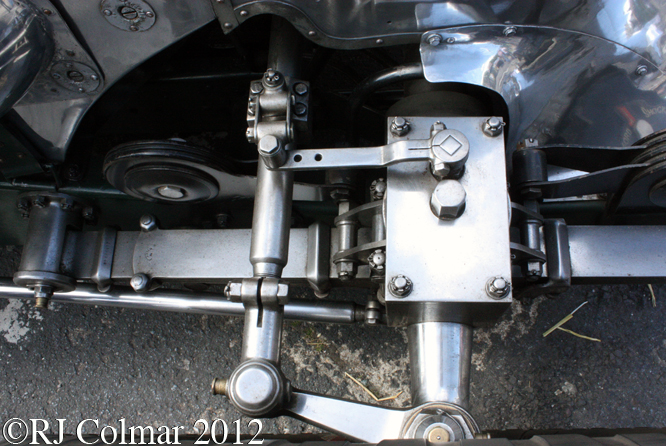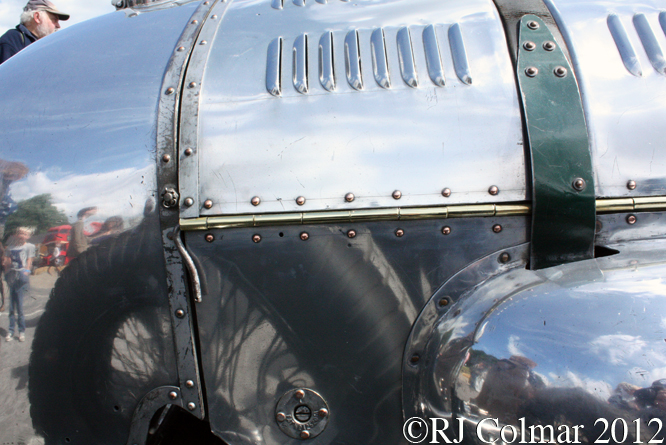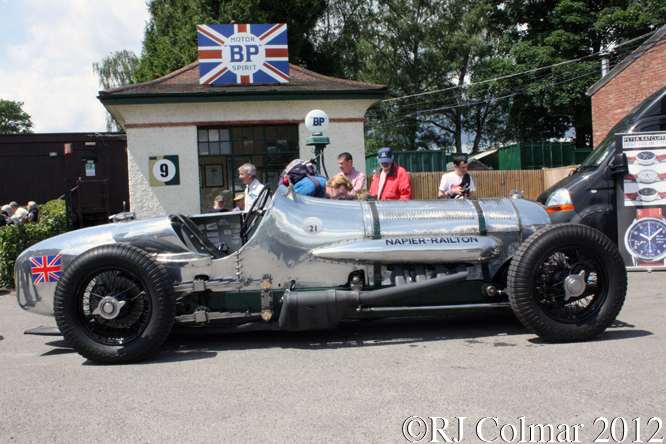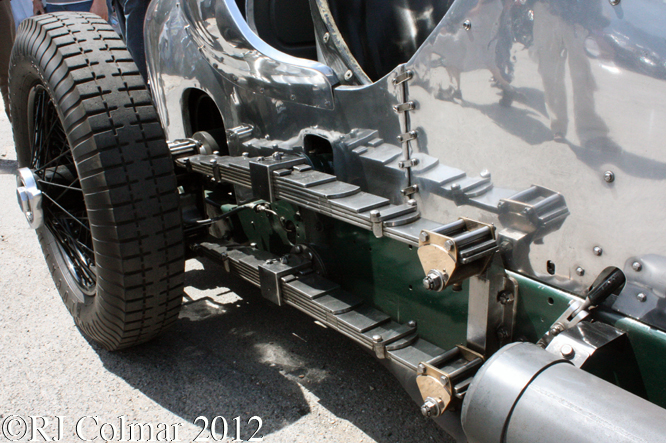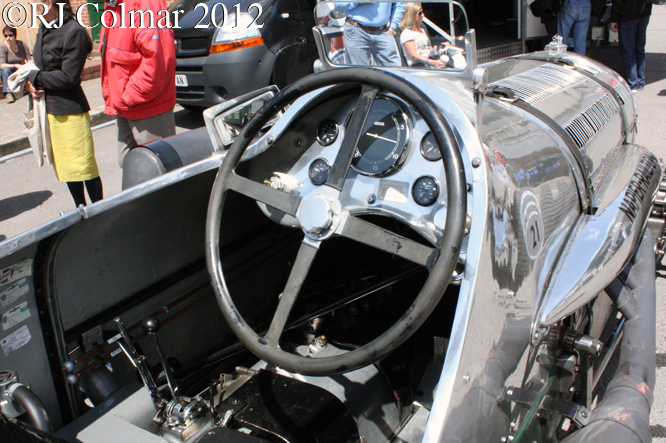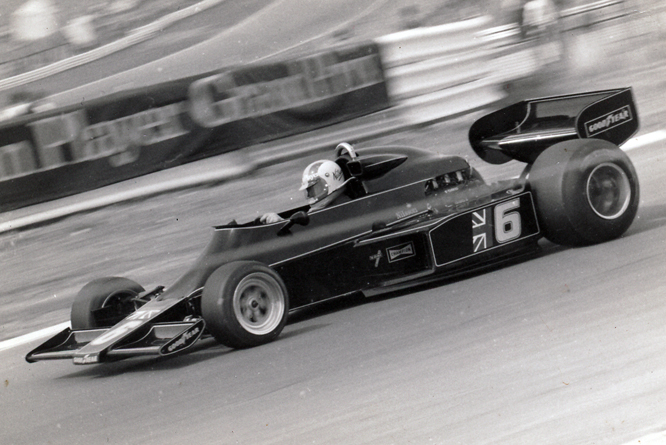The weather gods decided to give the billed Mini Invasion at Castle Combe an unrelentingly endless variation of track conditions on for the 12 races held on Bank Holiday Monday. Regrettably I missed the opening GadgetHelpline.com Castle Combe Classic race which appears to have been comfortably won by Nick Stagg from pole.

Having parked in a waterlogged field and donned my trusty green wellies I made my way to Quarry Corner in time to catch the 1st of two entertaining Mini Se7en / Miglia races. Kane Astin in the #11 who dropped several places off the line battled through the slippery conditions from 3rd on the grid to take the win in the the larger 1300cc / 79 cui Mini Miglia Class while a 15th place for Gareth Hunt secured a win in the 1000 cc / 61 cui Mini Se7en class. Above Robert Pavey was by no means the first to get caught out by the treacherous conditions at Quarry in the #94 Se7en as he was being lapped by Miglias of Astin #11, Dave Drew #2 and Peter Baldwin #33.

As ever the 1st of the two Ford Kent powered Formula Ford races proved unpredictable on a drying track Steven Jensen in the #22 Spectrum 011b made the best of a forth place start to take the lead from pole starter Roger Ogree in the #3 Van Diemien RF00 while fellow front row starter Natham Ward in the #23 Spectrum 011c was swamped on the line and came through in 6th on the opening lap. As the race progressed Ogree, with an eye on a good points finish, was content to hold station behind Jensen while Ward made amends for his poor start and ended up out fumbling first Ogree and then Jensen to take a well earned victory by just over a second.
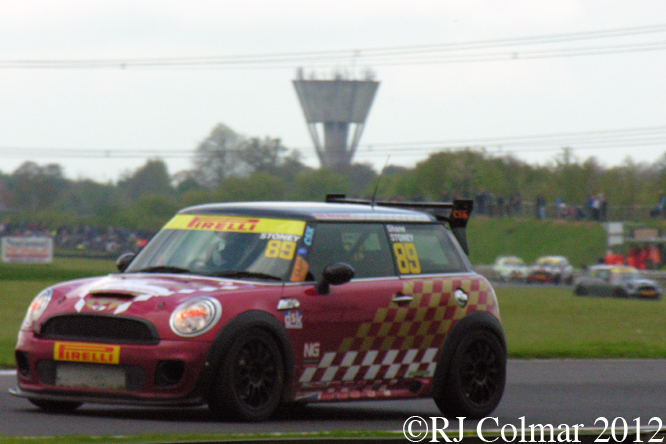
As the Mini Challenge cars went to the assembly area the track conditions were still damp and all of the cars were on intermediate tyres however sensing a dry spell Shane Stoney’s crew elected to pull their driver from a scheduled 8th place start in his John Cooper Works Class #89 Mini Cooper S R56 in order to fit slicks and start from the pits. Inspired or wise the choice was the correct one as it soon became apparent that Shanes car was the class of the field lapping around 2 seconds a lap faster than anybody else it was only a matter of time before he picked off the entire field and took the flag nearly 10 seconds to the good from Sam Osborne, back in 14th place Jonathon Brown won the Club class.

Having recently become the owner of a VW Golf IV it was an easy pick to root for Lloyd Allard a member of the well known motoring Allard family who was driving an Allard Motor Sport Golf IV TDi in the National Mobile Windscreens Saloon Car race. Unfortunately despite qualifying well in seventh the conditions got the better of him and his race was effectively ended when he got caught out on an oil slick at the Bobbies chicane which sent him into a tank slapper that ended in the infield wheat crop. To his credit Lloyd regained the track to make an unclassified finish. The race run on a sodden and later oily track was won by pole sitter Tony Hutchings in an Audi TT from Mark Wyatt driving a Vauxhall Astra and Mark Funnel’s Mini Cooper S, Will Claudio in a Peugeot 106 GTi took class B honours with a 4th place overall and Russel Ackers driving a Vauxhall Astra in 6th overall won class C.

With the track still very wet rain tyres were the only option for the start of the of the VADABAR Sports & GT Championship. Starting from pole in his all wheel drive Mitsubishi Evo Gary Prebble must have fancied his chances for taking a second win in the series and he made the most of it with a good get away to take a comfortable early lead, but as I saw several times last year this Championship is Simon Tilling’s to loose and after a poor start from third the drying track played to the strengths of his #23 Radical SR3long enough for Simon to take the lead. While he was searching for the few remaining wet patches on the drying racing surface Simon was nearly caught by Martin Baker in another Radical who finished just one tenth of a second behind Tilling. Above George Micheal did his best to save his #27 Toyota MR2 from a lurid spin at Bobbies, but ran out of talent and clobbered Douglas Watson series sponsors VADABAR BMW E36 M6.

George Robinson made the best of a pole position start to lead the early going from fellow front row starter Ben Rowe driving the #21 MR2, in the non championship Toyota MR2 race, a series that was on a day trip from its usual venue at Brands Hatch. However starting from forth Matthew Palmer was soon within striking distance of the pair of them in his #87 MR2. Several laps in Robinson tripped up and Matthew seized the lead and held it to the end with Rowe finishing second and a crest fallen Robinson coming home third. Jim Davies brought his MR2 Mk3 in forth to claim the class win for the newer cars with smaller motors.

Nathan Ward in the #22 Specrum 011c made no mistakes from pole position on his second start of the day, but it was Ben Norton in the #111 Spectrum, seen in third place behind Roger Ogree above, who came through from a fifth place start to take the win in a race where seven vehicles left the track in separate incidents that necessitated the use of the safety car to clear up some of the mess.

With the first six starting in reverse order that they finished in the first Mini Challenge race and a dry track there was no luxury of a tyre gamble for Shane Storey who started sixth this time round. With just over three tenths of a second covering the top three finishers 3rd place starter Lee Allen got the better of 2nd place starter Lee Patterson leaving pole sitter Martin Depper to claim the last place on the podium unchallenged after the #22 of Chris Smiley, above, completed a whole 1.86 mile lap with a cut tyre in forth place before it finally blew out and sent him into the barriers without any substantial further damage. Henry Gilbert claimed 12th overall and the Club Class win.

The second National Mobile Windscreen Saloon Car Race proved to be the race of the day as William Di Claudio in his little green Peugeot 106 GTi sensationally hounded the more powerful Audi TT ‘saloon/sedan’ (?) of Tony Hutchings over the first 8 laps of the race forcing Hutching’s to go lawn mowing of the outside of Camp on the last but one lap which gave William just enough momentum to seize an unassailable lead as they crossed the line going into the last lap. Mark Wyatt finished a further 4 seconds down the road in third, my man Lloyd Allard managed to keep his Golf TDi on the black stuff second time round starting 34th he came in a well deserved 7th !

The Mini Miglia and Mini Se7en combined race was another close fought affair with rain and the safety car interrupting the entertainment, above Peter Baldwin who started 3rd took the win taking the lead on the last lap from the #22 of pole sitter Richard Casey and early leader David Drew in the #2.
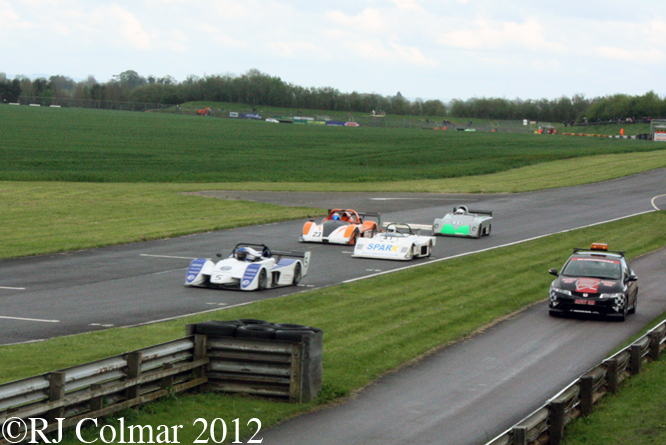
The twelfth and final event of the day held on drying track proved highly entertaining before the start when coming off pit road pole sitter Gary Prebble when straight into the corn field as his slick shod 4 wheel drive failed to find any grip. Prebble fell so far behind the field that he was still weaving through the field to his pole position on the warm up lap ! Craig Flemming starting second in the white and blue #5 Juno TR250 got the jump on Prebble and held the lead for 8 of the 9 laps. An incident requiring the safety car on lap 5 nearly destroyed the race having incorrectly picked up a hard charging Simon Tilling, in the distinctive orange #23 Radical, as the leader when he was still actually only in second place. Fortunately the incident was spotted and Simon was waved through with 3 laps to go and recovered his lost lap to set up a one lap shoot out. As the safety car came in Simon was marooned behind the lapped #41 Spar Jertona 85/09 of Jeremy Irwin while Flemming made the most of his opportunity to get away from the patient Tilling who waited until he crossed the finish line going into the last lap before blasting past the lapped Irwin as though he was standing still. Tilling then set about catching Flemming in what remained of the last lap. Incredibly Simon turned a 1,7 second lap to go disadvantage into a 0.7 second advantage as he crossed the line in a thrilling finish to the days action packed racing. Simon Tilling was the only driver to win both of his events at Castle Combe on Bank Holiday Monday.
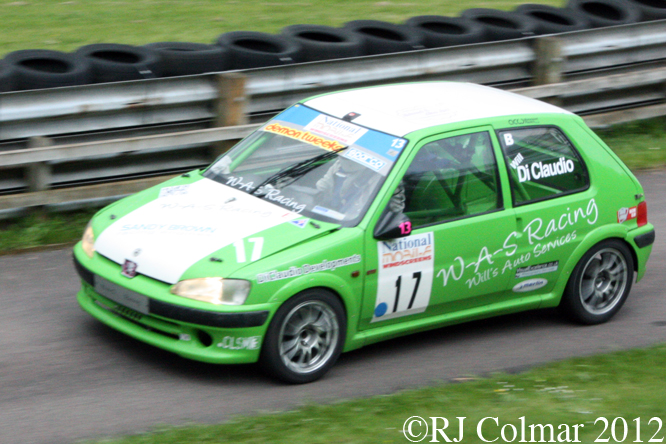
William Di Claudio’s giant killing effort in the second saloon car race earned him the Driver of the Day award. As I headed back to the waterlogged car park the sun came out for what turned out to be a mild evening.
Thanks for joining me on this ‘Di Claudio’s day edition of “Gettin’ a li’l psycho on tyres’ I hope you will join me again tomorrow. Don’t forget to come back now !

